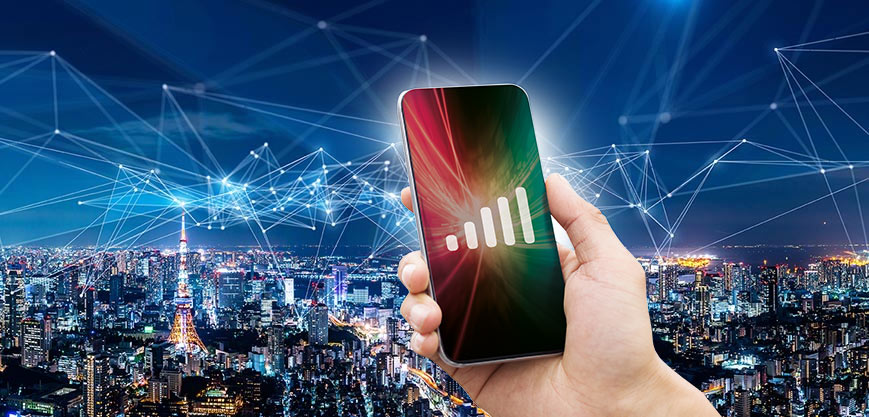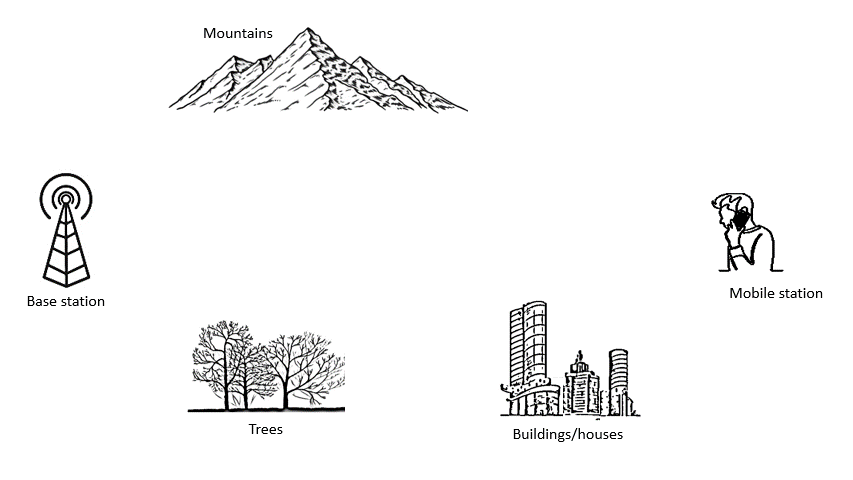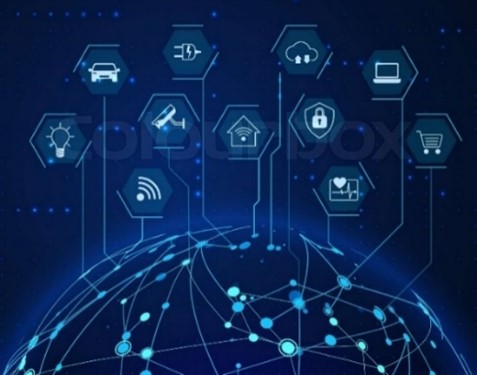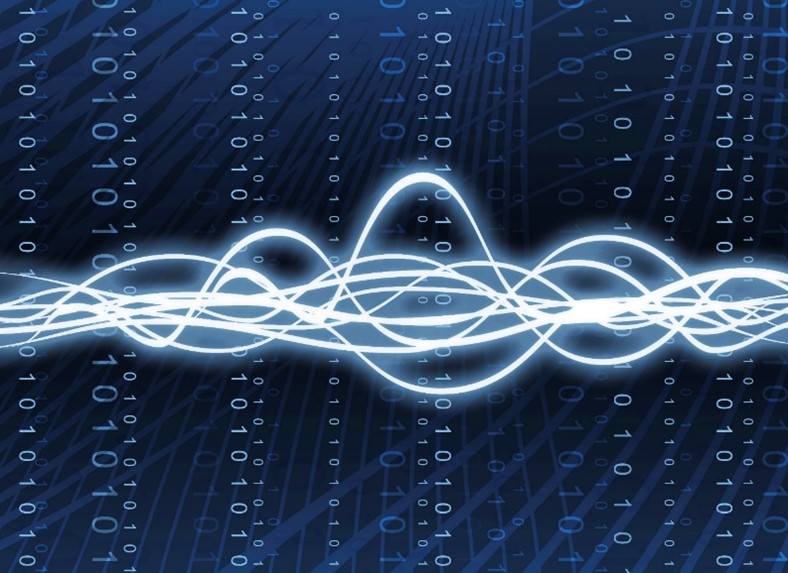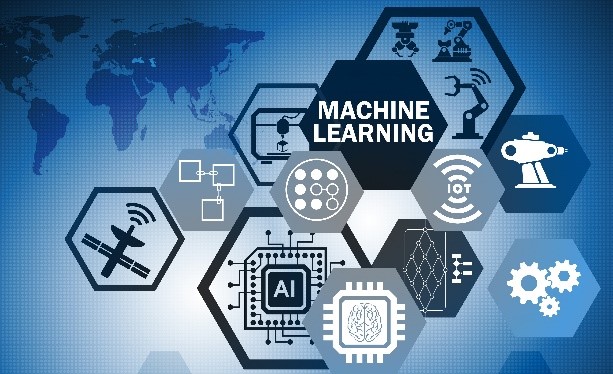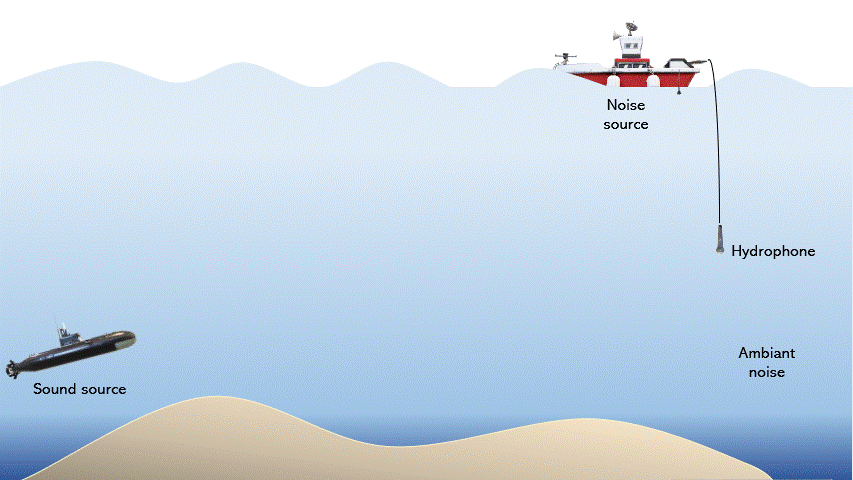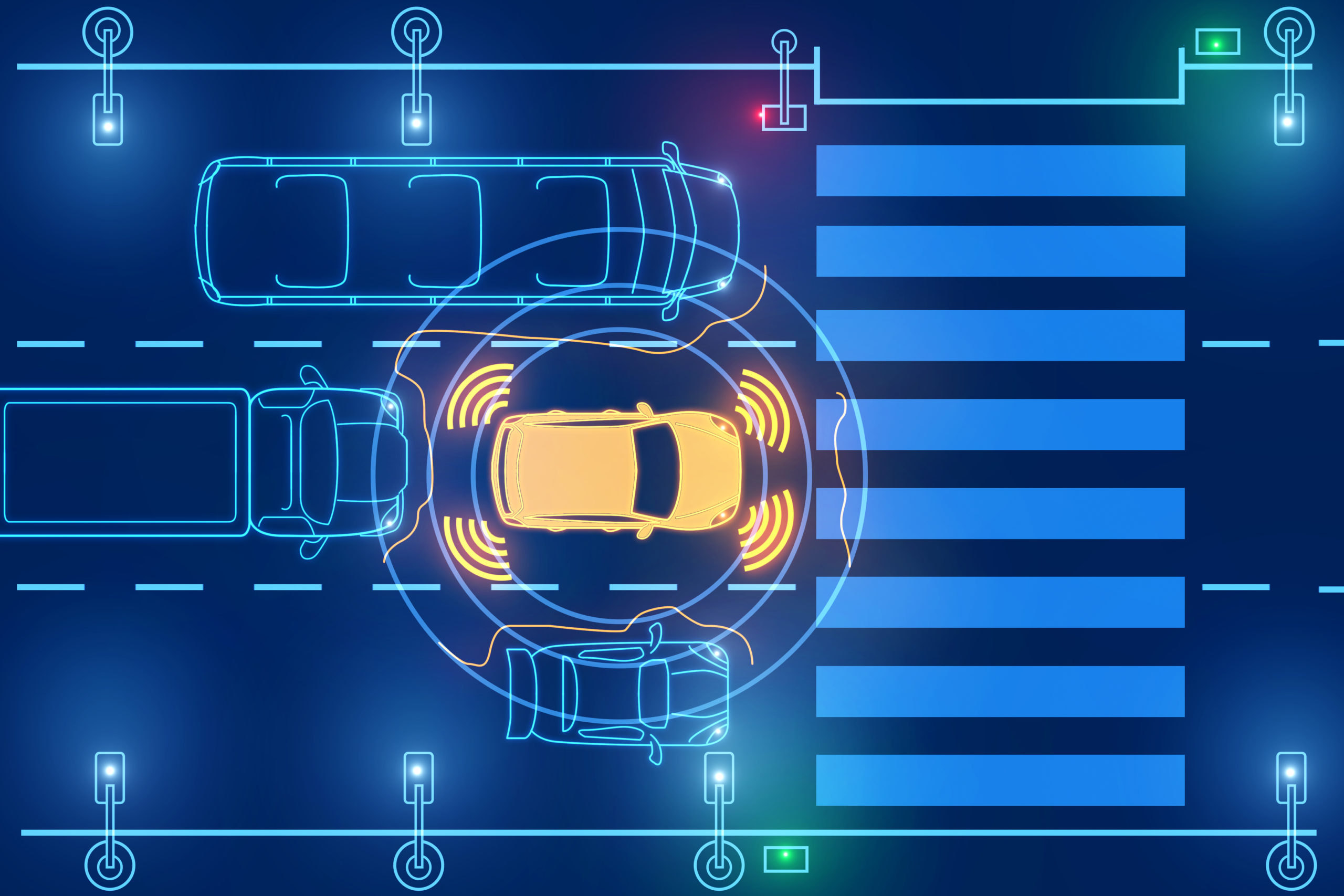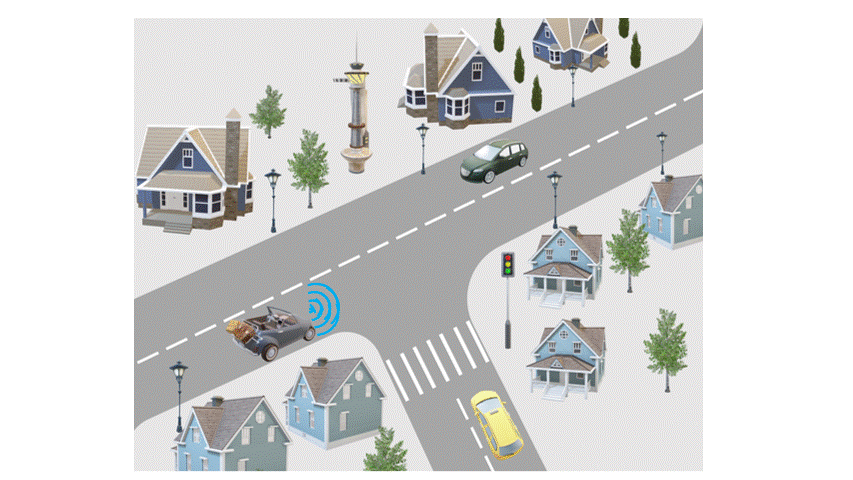Mobile communications
What is Mobile Communications all About?
Mobile communications, also known as cellular communications, has evolved rapidly in recent years and has become an important part of our everyday lives. Currently, the roll-out, optimisation, and expansion of 5G is running in parallel with early 6G fundamental research. In this context, engineers are confronted with the task of developing and launching new products that offer more services and applications within a tight timeframe.
New use cases and the demand for higher data rates as well as better spectral and energy efficiency add more design complexity. From research to prototyping to automated high-speed testing, getting results quickly is key to making next-generation wireless systems and networks a reality. In addition, researchers and thought leaders are already working to define 6G, the next-generation wireless standard.
6G research is exploring new technologies such as artificial intelligence and machine learning, sub-THz frequencies and radar sensing. From research to prototyping to high-speed automated testing, getting results fast is key to making the next generation of mobile communication systems and networks a reality. In addition, researchers and thought leaders are already working to define 6G, the next-generation mobile standard. 6G research is exploring new technologies, such as artificial intelligence (AI), machine learning, sub-THz frequency techniques, and radar sensing.
Our Research on Mobile Communications
- Indoor and outdoor multipath propagation
- Modelling, analysis, and simulation of (non-)stationary mobile radio channels
- Time-frequency analysis of mobile radio channels
- Performance analysis of mobile radio communication systems
- Massive multiple-input multiple-output systems (mMIMO)
- Capacity analysis of MIMO and mMIMO systems
- Distributed multiple antenna systems
- Millimeter wave (mmWave) and THz communications.
Data sensing
What is Data Sensing all About?
Data sensing refers to the measurement of real-world physical phenomena by means of a sensor or a sensor network. The process of sensing environmental variations or events may include transducing a physical condition or physical phenomenon by using a physical level sensor, signal conditioning, analogue to digital conversion, and data processing. Data sensing can be broadly categorized into active and passive sensing.
Active sensing utilizes self-generated signals or stimuli to capture variations in the environment, e.g., LiDAR, radar, Wi-Fi, sonar, and x-ray systems. A signal or a stimulus is generated usually by a transmitter or any other energy source of the active sensor in order to illuminate the environment. Depending on the application, the source signal may interact with the environment or a particular target object within the environment. The variations are finally observed in the sink signal to detect a phenomenon of interest.
On the other hand, passive sensing captures physical phenomena without actively interacting with the environment, and they barely respond to the inputs from the environment. Data sensing systems using passive sensors generate data by detecting light, heat, radiations, vibrations, or any other physical feature. Thermal, vibration, radiation, chemical, acoustic, motion capture (MOCAP), and vision sensors fall under the category of passive sensing.
Our Research on Data Sensing
At the mobile communications group (MCG), we work with data sensing systems based on both active and passive sensing technologies. We use two different types of MOCAP data sensing systems to capture human motions. The recorded human motion data can be used to generate 3D trajectories for a variety of human body segments. One of our MOCAP systems is a smartsuit developed by Rokoko, which tracks human 3D motion using accelerometer-based sensors.
The second type of MOCAP systems that the MCG uses is based on optical sensors developed by Qualisys, which is more robust than the accelerometer-based smartsuit technology. The Qualisys MOCAP system needs data from multiple optical sensors to capture the human motion the 3D space.
At the MCG, Wi-Fi and millimetre wave multiple-input multiple-output (MIMO) radar systems are mainly used to measure the raw data of the backscatter signal. From the raw data, we compute the non-stationary channel characteristics and the micro-Doppler signatures of the target objects by using time-frequency signal processing techniques.
To further improve on the accuracies over a wider range of operating conditions and to efficiently observe the environment, acoustic sensors are used in combination with radar sensors, which results in a better sensing diversity. We use sensor fusion techniques to better recognize the target environmental attributes.
Signal processing
What is Signal Processing all About?
Technology has become the center of our daily lives. Devices like computers, cell phones, smart watches, and many others are used by everyone on a regular basis. All these devices are based on so-called signal processing, a branch of electrical engineering that deals with the representation of physical phenomena as data and their processing. The areas in which signal processing is used are numerous and include, among others:
- Audio processing which is used in both analog phones and smart phones, audio file coding compression (mp3, AAC, Apple’s ALAC, and FLAC), voice assistants like Siri, Cortana, and Alexa.
- Image processing which is widely used in smartphones, cars, planes and hospitals, to name just a few examples, where numerous applications are employed for image analysis, image compression, image restoration, and colour mapping.
- Communication systems, such as mobile, satellite, and vehicular communications systems, rely heavily on signal processing techniques to assure high communication quality among users.
- Wearable devices which have become popular in recent years use signal processing to convert body sensor signals, such as heartbeat and heart rate variability, into parameters that indicate the user’s health and fitness status.
- Autonomous driving use signal processing to command the autonomous vehicle to stop or drive based on data collected by numerous sensors, including radar and camera sensors.
- Data science uses machine learning techniques that require the analysis of large data sets, with signal processing playing an essential role.
Our Research on Signal Processing
- Statistical signal processing of non-stationary stochastic processes
- Signal processing for millimeter wave (mmWave) and THz radar systems
- Micro-Doppler signal processing and analysis
- Spectrogram analysis for human activity recognition (HAR)
- Time-frequency signal processing for mobile radio channels and HAR
- Wi-Fi channel state information (CSI) processing and analysis for HAR
- Feature extraction from sensor signals for machine learning frameworks
- Signal analysis for acoustic underwater communications.
Machine learning
What is Machine Learning?
Machine Learning (ML) and deep learning (DL) are extremely interesting and rapidly growing subfields of artificial intelligence (AI), where we broadly investigate how computer systems can learn from experience to automatically produce descriptive, predictive, or prescriptive outcomes without being explicitly programmed. Consequently, computers can imitate human behavior in solving complex tasks. This means computers can recognize humans and their actions, perceive visual scenes, understand text written in natural language, create art, write novels, or perform actions in the physical world such as driving a car.
ML/DL begins with data. The data can be in the form of numbers, characters, or photos such as time-series data from sensors, handwritten text, pictures of humans, animals, objects, or scenes. The data is gathered, processed, and prepared to be used to train an ML/DL algorithm (or a model). The trained model is deployed to predict the outcome of new unseen data.
As our society is continuously reshaping by the advances of digital technologies, ML/DL is essential for most of our current and future applications.
Our Research on Machine Learning
At the mobile communications group (MCG), we are developing futuristic, robust, non-invasive, and user-friendly human activity recognition (HAR) systems that are capable of predicting a wide range of human activities and gestures in real-time. This technology is a key enabler for developing ambient intelligent spaces, ambient assisted living environments, and personalized healthcare and wellbeing applications. Developing environment and orientation independent HAR systems is a challenging task because it significantly depends on human, environmental, and technical factors.
At MCG, we approach this multifaceted challenge from various research directions. As we know, ML/DL methods are data-driven. Therefore, a lot of training data should be collected from a lot of subjects performing different activities in different environments under different scenarios, which is laborious, expensive, and time-consuming. We develop techniques to generate near-human synthetic data for training ML/DL models to reduce data collection efforts. A single sensing modality is insufficient to recognize a wide range of (simple to complex) activities and gestures. Therefore, MCG explores complementary and cooperative sensing techniques, feature extraction, selection, and data fusion approaches and develops ML/DL methods for end-to-end HAR systems.
In addition, MCG is actively developing a non-invasive fall detection system, as well as investigating how non-invasive intelligent sensing can contribute to better decision making for personalized healthcare, elderly care, and remote patient monitoring without disrupting existing health information systems (HIS) infrastructure.
Underwater communications
What is Underwater Acoustic Communications all About?
Underwater acoustic (UWA) communications is a method of underwater communication that uses sound as the transmission medium. Due to the poor propagation characteristics of electromagnetic waves in water, especially in salt water, waterborne sound is an acceptable alternative for underwater communication. The absorption coefficient of sound in seawater is less than 5 dB/km below 20 kHz and decreases sharply with decreasing frequency. Because of the good propagation conditions of sound under water, UWA communications is nowadays mostly used in the frequency range from 10 Hz to 1 MHz with ranges of up to 1000 km. Compared to mobile communication systems, UWA communication systems have low bandwidths and thus low data rates, which is due to the fact that this technology uses acoustic waves instead of electromagnetic waves.
Nowadays, UWA communications has opened up numerous areas of application. For example, underwater telephony between divers using ultrasound is quite common. Besides voice communication, digital data transmission is the main field of application for UWA communications. These applications include the German Indonesian Tsunami Early Warning System (GITEWS), which consists of a pressure sensor network on the seabed, as well as the Deep Siren communication system that promises a transmission range of several 100 kilometres. UWA communication systems play also a key role in autonomous underwater vehicle (AUV) navigation, scientific exploration of the ocean, offshore exploration, and UWA sensor networks, to name just a few examples.
Our Research on Underwater Acoustic Communications
- Modelling, analysis, and simulation of geometry-based stochastic and deterministic underwater acoustic channels
- Spectral analysis of measured underwater acoustic channels
- Design of measurement-based underwater acoustic channels
- Time-frequency analysis of non-stationary underwater acoustic channels
- Modelling of multiple-input multiple-output (MIMO) systems underwater acoustic channels
- Capacity analysis of MIMO underwater acoustic channels
- Performance analysis of underwater acoustic communication systems
- Modelling and analysis of ocean waves
- Design and evaluation of sea surface simulators.
Vehicular communications
What is Vehicular Communications all About?
In recent years, vehicles have become more connected facilitating vehicle-to-vehicle (V2V) communication to allow other vehicles equipped with V2V technology to exchange information about the speed and position. Consequently, V2V communications have gained a considerable attention from both industries and academia due to their numerous applications in the field of intelligent transportation system (ITS). Exchanged information between vehicles is used to enhance functionality of vehicles by reducing the accidents on the roads, the travelling time, and extending the driving vision in bad weather conditions. In this regard, V2V technology is becoming an important part of ITS. V2V technology enables vehicles to send and receive omni-directional information. In ITS, the wirelessly exchanged data between vehicles is also used to improve traffic management by broadcasting and receiving information from roadside infrastructure, such as traffic lights and road signs, which designates a vehicle-to-roadside (V2R) communication. Hence, a combination of V2V and V2R communications defines a vehicle-to-everything (V2X) communications. In the near future, deployment of V2V technology could become mandatory and this may increase the use of driverless vehicles on the roads. Radio signal propagation characteristics in V2V communication channels differ significantly from those of traditional cellular wireless channels. In V2V channels, the antenna heights of the transmitter and the receiver vehicles are low and both vehicles are in motion. To ensure the reliability and performance of V2V communications, it is essential that the underlying V2V radio channel is accurately known.
Our Research on Vehicular Communications
- Developing multipath propagation models for vehicular communications in urban, sub-urban, and rural areas
- Modelling, simulation, and analysis of stationary and non-stationary V2V radio channels
- Designing of geometry-based and measurement-based multiple-input multiple-output (MIMO) V2V radio channel models (elliptical models, T-junction models, rectangular street models, straight line models)
- Analyzing the characteristics MIMO V2V radio channels under specific propagation conditions (urban roads, tunnel roads)
- Time-frequency analysis of MIMO V2V radio channels with time-variant path gains, time-variant Doppler frequencies, and time-variant propagation delays
- Validating of the developed V2V radio channels through measurements from real-world V2V channels
- Capacity analysis of MIMO V2V radio channels
- Performance analysis of V2V communication systems under stationary and non-stationary propagation conditions.
We teach courses on our research topics at the University of Agder.
See all our courses:
